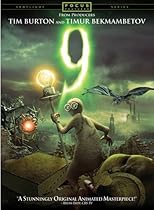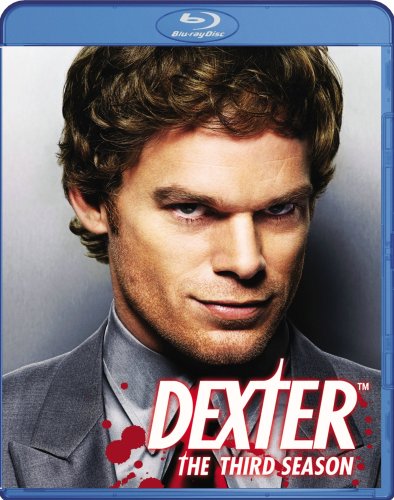This Week’s Blu-ray and DVD releases provide further evidence that expectations are often made to be thwarted: A little movie that could have been buried and forgotten instead became a sleeper hit, while a would-be hit disappeared from theatres with barely a ripple of attention from audiences. There is also an animated fantasy whose trailer promised more than the film delivered and a little direct-to-video title headlined by an actor who went on to star in the summer’s biggest sci-fi blockbuster.

Paranormal Activity – One of 2009’s scariest and best films is apt to divide audiences even more on DVD and Blu-Ray as it did in theaters this past fall. Director Oren Peli’s self-bankrolled film sat on Paramount’s pay-no-mind shelf for well over a year while the studio slowly released it to festivals, generating a palpable buzz that had audiences literally signing an online petition to get the film released in their city. We caught the film at Lincoln Center’s semi-annual Halloween horrorthon and were thoroughly blown away (clicky here for our effusive write-up) though we have heard that less respectful audiences could easily ruin the experience. We’re anxious to see if the film weaves a similar spell at home – it’s an intimate experience, so we don’t expect too much of an issue. From the press release:
The PARANORMAL ACTIVITY DVD is presented in widescreen enhanced for 16:9 televisions with Dolby Digital English 5.1 Surround and Spanish 5.1 Surround (theatrical version only) and English, French and Spanish subtitles. The two-disc Blu-ray is presented in 1080p high definition with English 5.1 DTS-HD Master Audio and Spanish 5.1 Dolby Digital (theatrical version only) and English, English SDH, French and Spanish subtitles. Special features include:
Unrated version with alternate ending not seen in theaters
Digital copy of theatrical version (Blu-ray only)
Limited Collector’s Edition:
Fans like you made Paranormal Activity a nationwide phenomenon, and now you can literally own a piece of the film that you helped make successful by owning the Limited Collector’s Edition DVD. Available only online and in limited quantities, the Limited Collector’s Edition DVD contains exclusive items that showcase your commitment and let you boast that YOU “demanded it!”
The Limited Collector’s Edition DVD can only be ordered online and includes:
The theatrical version and an unrated version with an alternate ending never shown in theaters
An authentic film cell from the movie, featured on a collectible trading card
Individually numbered, limited edition t-shirt to showcase that YOU “demanded it!”
PARANORMAL ACTIVITY
Street Date: December 29, 2009
S.R.P.: $29.99 U.S (DVD) – $40.99 U.S. (Blu-ray)
Runtime: 86 minutes
U.S. Rating: R for language
Canadian Rating: 14A for frightening scenes and coarse language; not recommended for children
As you can see, we’re a little stunned that Paramount should choose such a punitive pricing structure for this low, low budget film ($41 for a Blu-Ray should help to encourage piracy nicely, Paramount).

Jennifer’s Body – A film that had all the ingredients for a hit was a surprising fizzle at the box office this past fall. Maybe it was the criminal over-exposure of star Megan Fox, or the pixie dust that writer Diablo Cody had previously sprinkled over the critics with Juno had worn off, but it’s just more proof that in Hollywood, no one knows anything. We hope to have a screener sent to us soon, but until then, here’s what to expect (from the official press release):
Blu-ray (BD) Features:
Disc One
Theatrical Widescreen Feature Film
Audio Commentary with Director Karyn Kusama and Writer Diablo Cody
Extended Widescreen Version
Audio Commentary with Director Karyn Kusama
Deleted Scenes
Dead Boys
Jennifer Check Is Gross
Needy Confronts Jennifer
Who’s Cindy Crawford?
Needy Faces The Band
Ass, Gas or Grass…
Gag Reel
Jennifer’s Body: The Dead Pool
Video Diaries
Megan Fox and Johnny Simmons
Amanda Seyfried
Diablo Cody
Dan Dubiecki
Megan Fox Is HOT
Megan Fox “Peer Pressure” PSA
Fox Movie Channel Presents ‘Life After Film School’ With Writer Diablo Cody
Disc Two
Digital Copy of Jennifer’s Body (Extended Version)
Standard DVD Features:
Theatrical Widescreen Feature Film
Audio Commentary with Director Karyn Kusama and Writer Diablo Cody
Extended Widescreen Version
Audio Commentary with Director Karyn Kusama

9 – If you find yourself watching Daniel Day-Lewis doing a Fellini impression while being serenaded to by Nicole Kidman, you’re watching the wrong movie. This 9 is an animated feature directed by Shane Acker, a former WETA animator who first tackled the subject as a student short several years ago (this version was executive produced by Tim Burton). The film (which we avoided solely because the digital animation style reminded us of the cut-scenes from a video game that we never would have been playing) features a top notch vocal cast, including Elijah Wood, Christopher Plummer, Martin Landau, and even Crispin Glover and what we assume will be a ravishing Blu-Ray presentation, in addition to a standard DVD release.

Carriers – The winner of 2009’s fortuitous casting award for the presence of Chris (Star Trek’s new James T Kirk) Pine makes its debut on DVD. From what we’ve read about the film, it seems to be a grim, post-apocalyptic, survivors-against-zombies type of tale of the stripe that only feel stale when they take themselves too seriously. The presence of Pine is a definite plus (forget hype – his performance as Kirk is an amazing achievement under incredibly difficult circumstances) and we look forward to checking this out.









